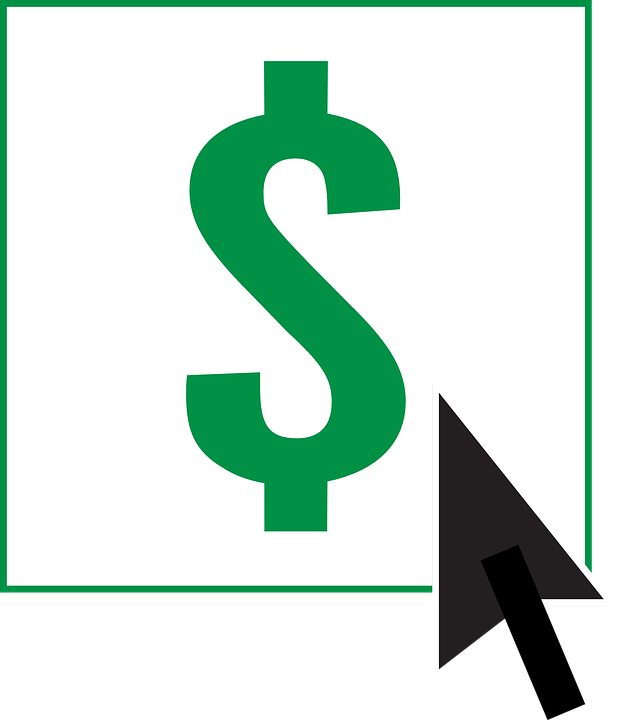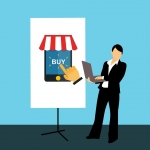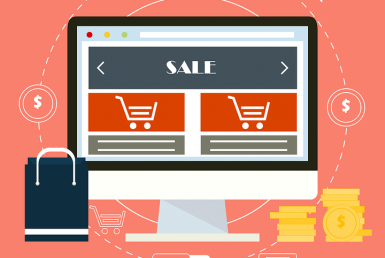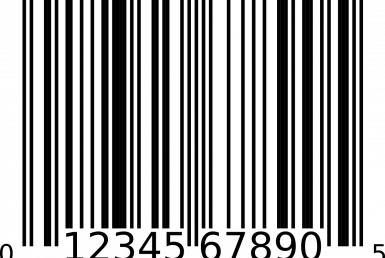Ecommerce Business Classification in 2018!

Ecommerce Business Classification in 2018! –
So, what is ecommerce business classifications anyhow?
E-commerce business is the commercial transactions of online business,
going through electronically over the Internet. The E-commerce industry is
not an exact industry, so no specific SIC code is established for business identification.
So, how do you know if you are looking at the right questions when you embark on your e-commerce business project?
Compare, Research and Review –
(Strategized your Business Plan)
This is a great strategy point for your e-commerce business website.
This is because different SIC codes can be established based on the definition and description
of the business. For example, a SIC code 5961, would include the catalog and
mail order houses for conducting online transactions.
This means, establishments that are mainly involved in the engagement
of the retail sale of products from the following sources:
- Television order
- Catalog
- Mail order

Other Types – Ecommerce Business Classification
Other SIC Types There exist, another type of SIC code for this industry group, which is Ecommerce.
This code looks at the electronic shopping realm of an e-commerce business website.
This means, that the United States industry, is complied with establishments that
are engaged in all types of merchandise, using the Internet as their means to do business.
There is another way to identify the SIC code of an Ecommerce Company.
This would be done through the target of the Retail Trade Industry, categorized in pages 52-59.
This is considered the retail trade industry, and if you decide to look at these buying prospects,
then you will target the companies in this industry niche who have websites.
Ecommerce Business Classifications
It can be a challenging feat to handle the basis and purpose of these types of businesses.
This is because they can become tricky and need clarity through the organization of categories.
There are similar patterns that can be analyzed through category segregation, in order to find
these e-commerce categories. Through this process of close examination,
and analysis, 2 parameters become evident in this type of business model.
This type of analysis is important to follow through on, because, it provides business
insight into the model and a financial model of the enterprise.
So, through classification of the e-commerce business brand, other areas of
sold goods become relevant. This is because e-commerce businesses are in the business to sell!
This is true. Think of all the different product types your
drop shipping e-commerce website offers its buyers.
For example, 3 Types of Goods Sold.
Physical Goods of E-commerce Business Classification
The actual physical goods of the product. For example, appliances, furniture or other gadgets.
Digital goods such as computer software.
These items come in the form of,
- eBooks,
- music,
- images,
- video.
Services included, such as insurance and tickets.
Positive Side of the Financial Model of Ecommerce
Keep in mind, the logistics and delivery of physical goods for your e-commerce business.
Make sure to consider the types of goods or products to sell,
before you buy or sell an ecommerce drop shipping business.
This is because of the actual logistics of delivering the physical goods,
can be cumbersome in relation to the selling of digital goods.
Think about buying a physical, tangible book, versus one that
you can download directly on your Kindle or another online reader platform.
Transportation of Ecommerce Businesses
The transportation of the two are different since one is based in software,
while the other is based on the physical realm.
So, you can see the huge advantages of selling digital based merchandise and products online.
There are other positives about having digital products or digital merchandising in
comparison to the tangible aspect of e-commerce.
For example, think of online tickets.
You may need to purchase online tickets for a concert, or main event,
or just air tickets for your next big vacation.
These digital products, also have other external factors, that can affect them in real time.
What are some of these factors? – (E-commerce Business Classification)
Some of these factors to consider with digital products, are airplane tickets, and its availability.
This can be achieved through the intuitive software that is being discussed in this article piece.
Such as finding the best location for airplane seats, or if you want a certain meal preference,
you have that option. But keep in mind, the refundability options when it comes
to digital ticketing and product purchasing. Now that you have a good basis of
digital goods versus tangible goods, and online distribution, let’s look at the nature of business brand participation.
Classification of Ecommerce Businesses?
There exist, 3 common participants in the e-commerce trade.
These include:
- 1. Business
- 2. Administration
- 3. Consumers
Now, that we have established this business trait, let’s look at the
6 primary ecommerce types. This overview will help find the best
ecommerce types for your investment or business needs, today!
6 Ecommerce Types for Business Consideration:
(Business to Business – Business Type)
So, the first one is B2B. This is known as the business to business model.
This is where both the players involved are businesses. Thus, business to business,
ecommerce type. An example of this type of model is a business who manufactures
gadgets and uses their ability to enhance other online components.
So, this type of model will focus on the products that are provided from one
business to another, but this will also attract a niche type of business,
for example, service providers.
Software companies, for example, would be included in this model of business for e-commerce.
Deeper Examination of the Process Now that you understand the focus of a B2B Model,
which is the product exchange between one business to another,
let’s look at niche marketing within this isolated group.
You will find that many of the ecommerce business types in this niche group are service providers.
This means you will also find software companies.
You will also find other types of businesses, such as:
- Office Furniture
- Supply companies
- Document Hosting Companies
- And So many more!
Empirical Business Evidence Include:
- Exxon
- Mobil Corporation
- Chevron
- Boeing
- Archer
- Daniel Midlands
This means these corporations have a custom enterprise e-commerce platform,
that can work directly with other businesses. These business relationships are
created and formed in a closed environment for security and other related reasons.
Business Model
This type of business model would normally take more startup cash than other business types.
So, let’s examine other business models in the ecommerce arena,
you may just find your next new ecommerce purchase.
Business to Consumer – Ecommerce Model
The next type of business classification is considered, business to consumer
or B2C. This means that a business sells goods and products online to their customer base.
Amazon is a definite example that comes to the minds of many who think of
this definition and business model. This is, what most people
will think of when they imagine an ecommerce business model.
This model is considered to be the deepest e-commerce market
in the online marketplace. This is in part due to its integration of
both the brick and mortar and click to mortar establishment approach.
This is because of this type of business model, unlike others,
also incorporates the traditional retail model of business.
Empirical Examples of this business classification are:
- Newegg.com
- Overstock.com
- Wish
- ModCloth
Majored B2C E-commerce Business Models include brands like:
- Gap
- REI
- Target
- Walmart
- Staples
- OfficeMax
- And the list continues as you can image.

Benefits of B2C
This type of business model eliminates the need for a retail or physical store since
most of its logistics are done through online methods.
This is where the cost of doing business, can strengthen
the business model and foundation of an ecommerce business.
The next type of e-commerce business type is the Consumer to Business Model description.
Consumer to Business – C2B Business Model
This type of ecommerce model puts the initiative in the consumer’s hand.
This means for example, that an online consumer can engage and participate in
the business fulfillment process. This fulfillment process can include,
applying for a job, on a company job site or more.
This can be expanded through multiple job site forums,
or company website pages, encouraging online user participation.
The next business models look at the relationship between the
consumer to the business, back to the consumer ecommerce.
C2B2C – Ecommerce Model
This type of business model allows consumers to sell other consumers products or goods.
eBay is a business that participates in this business model.
The next type of business model is called the B2A.
What is Business to Administration – B2A Ecommerce?
The definition of administration in relation to this business model description relates
to the public administration or government entities.
This means that an e-government exists in the marketplace of ecommerce.
This can be seen with countless branches of government or entities that are
dependent on these e-services or products. The business can supply their
forms or other needed documentation through an electronic base.
There exists another type of business ecommerce, and the last of the 6 description types.
Consumer to Administration – Ecommerce Business Type
This type of business operation allows consumers to be involved in the equation process as well.
Even though the government rarely buys products and services from
individuals, an electronic mean to transmit payments or file tax returns, does exist.
There is a special occurrence for employees of these business types.
They are seen or regarded as a special type of consumer and have that
label assigned to their role. This new approach and view on these employee types
can also give rise to a new developing type of ecommerce, B2E.
Also, known as Business to Employee Ecommerce.
Industry Examples
So, as you can see, with the onset of new web technologies, the creation of business models is beginning to ferment.
Here are some industry examples of these e-commerce business models:
- Mobile Ecommerce
- Bricks and clicks
- Multichannel
- E-commerce website
- Storefront or retail locations
- Piggybacking Method of Ecommerce

Conclusion: Ecommerce Business Classification
There are many different types of e-commerce business models as you have learned and discovered.
You have learned that each brings an added value independent of the rest.
This examination of the different ecommerce business models will help
compare the best e-commerce business types for your personal and business needs.
This like for like comparison shows the different approaches each e-commerce business model upholds.
You can find the model that has the least cash out of pocket, or startup cash,
for a reasonable return on your investment. This depends on your business portfolio or
business acquisition decision-making process. You will want to consider
the different types of business transactions you will be taking.
This means, what type of business operation do you really want
to run or see yourself buying and then selling. These are the questions you want to
ask in determining the best business outcome for your next e-commerce business purchase.
- B2C
- B2B
- C2C
- C2B




